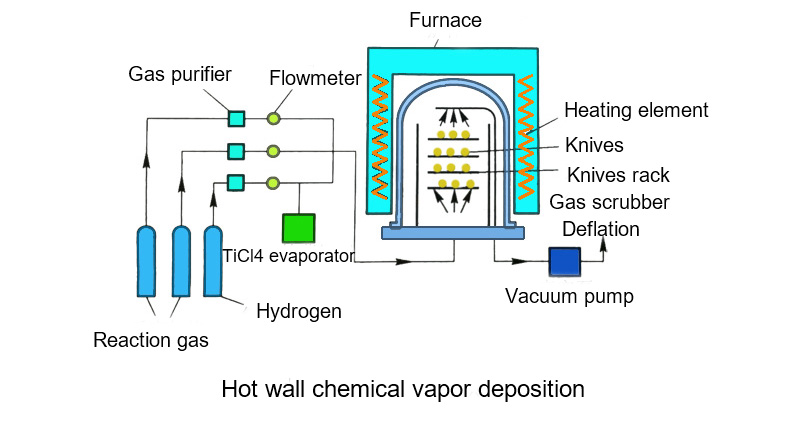Generally CVD reactions rely on high temperatures, hence called thermally excited chemical vapor deposition (TCVD). It generally uses inorganic precursors and is performed in hot-wall and cold-wall reactors. Its heated methods include radio frequency (RF) heating, infrared radiation heating, resistance heating, etc.
Hot wall chemical vapor deposition
Actually, hot-wall chemical vapor deposition reactor is a thermostatic furnace, usually heated with resistive elements, for intermittent production. Drawing of a hot-wall chemical vapor deposition production facility for chip tool coating is shown as follow. This hot-wall chemical vapor deposition can coat TiN, TiC, TiCN and other thin films. The reactor can be designed to large enough then hold a large number of components, and the conditions can be controlled very precisely for deposition. Pic 1 shows an epitaxial layer device for silicon doping of semiconductor device production. The substrate in the furnace is placed in a vertical direction to reduce contamination of the deposition surface by particles, and greatly increase the production loading. Hot-wall reactors for semiconductor production are usually operated at low pressures.

Post time: Nov-08-2022

